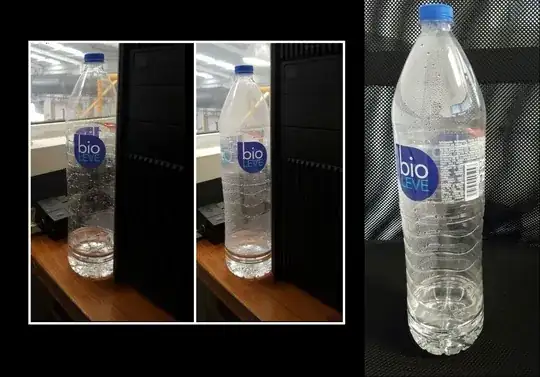So, I noticed that in a closed plastic bottle (say only less than half full) little droplets of water were condensed on one side of the internal surface. That was the side exposed to sun rays.
Why should water condense were sun rays hit more directly?
I would expect that water would condense on the (sensibly) colder portion of the internal surface. I can see that water vapor inside the bottle maybe absorbs more energy from the sunrays and therefore tends to condense on the (colder) plastic surface.
But why on the side where sun hits more directly?
I think I observed the same with a 70 W lightbulb.
